Casio Exilim EX-FH100 Review
Casio Exilim EX-FH100
Casio's new top compact is packed with clever features
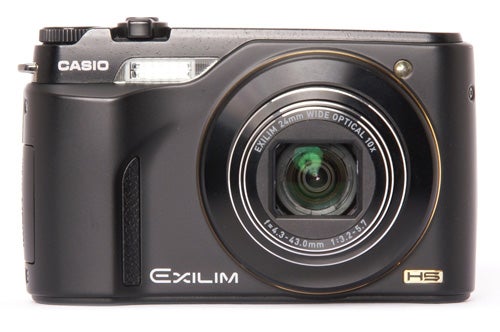
Verdict
Key Specifications
- Review Price: £249.00
The FH100 will be competing against some very popular and well-established cameras, including Casio’s own EX-H series, such as the new EX-H15 (£190) that I reviewed last week. Rivals from other manufacturers include the immensely popular Panasonic TZ10 (£240) and TZ8 (£210), as well as the Samsung WB550 (£150) and WB650 (£250), the Canon SX210 IS (£210), the Olympus mju 9000 (£240), the Nikon S8000 (£190), the Sony HX5 (£264) and the newly-announced Pentax RZ10, as well as a number of others. Against this competition the FH100’s asking price of £249 may seem a little expensive, but it does offer some features that none of its rivals can match.
The design of the FH100 clearly owes a lot to the shape of the EX-H15 and its predecessor the H10, but the resemblance is mostly superficial. Like the H15 it has a strong body made mostly of aluminium with plastic on the top panel, it has the same three-inch LCD monitor (although only 230k resolution), and the lens certainly appears to be the same as the H15, a flush-folding 10x zoom f/3.2 – f/5.7 11-element construction with aspherical elements and a focal length range equivalent to 24-240mm. However there the resemblance ends, because the FH100 includes a much wider range of controls reflecting its more serious remit.
The FH100 is one of the larger long-zoom compacts, measuring 105 x 63.2 x 29.9mm, and weighing a substantial 224g including the memory card and the big 1950mAh li-ion battery. This is the same battery that powers the H15 for its class-leading 1000-shot duration, but due to the FH100’s heavier power requirements it only provides 300 shots on a full charge. This is still better performance than most of its competitors however.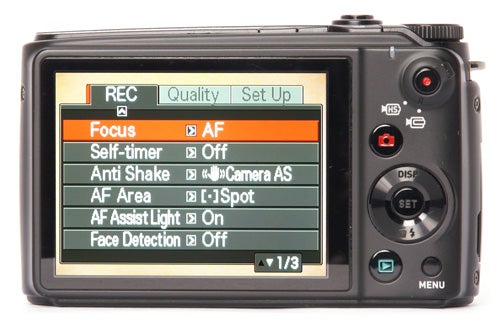
The camera body incorporates a shaped handgrip on the front, with a small textured insert, while on the back the raised surround of the video shooting button provides a thumbgrip, making the camera very comfortable and secure to grip. The control layout is well designed, with the shutter button and its rotary bezel zoom control falling neatly under the forefinger.
The most obvious difference between the design of the H15 and the FH100 is the inclusion of an exposure mode dial on the right of the top panel. It is fairly straightforward, offering a choice of aperture priority, shutter speed priority, full manual or program auto exposure, as well as Casio’s usual Best Shot scene program mode. The options here are more limited than on some advanced compacts; only minimum or maximum aperture can be selected, but the full range of shutter speeds from 30 seconds to 1/2000th of a second are available. Exposure values are adjusted via the D-pad and sidebar menu.
Also on the top panel is a button that activates the FH100’s main selling point, its high-speed continuous shooting mode. The camera is equipped with an ultra-fast back-illuminated CMOS sensor and is capable of shooting bursts of up to 30 frames at speeds of up to 40 frames a second, at nine megapixel resolution, including the ability to pre-shoot up to 25 frames so that you don’t miss any of the action.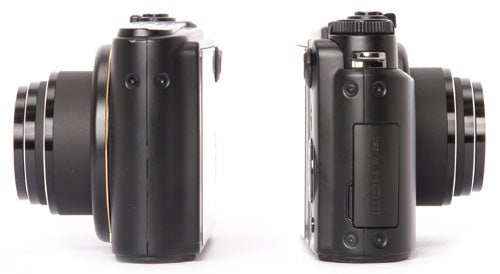
The high speed sensor is also used in the FH100’s video recording modes. It can shoot 720p HD video, with stereo sound recorded by two built-in microphones mounted on the top panel and a dedicated video recording button on the back, but it can also shoot ultra-high-speed video clips at up to 1000 frames a second, although at greatly reduced resolution. Video output is via a mini HDMI port located under a hatch on the side of the camera.
This high speed capture ability is also used to provide the FH100 with several other useful features, mostly found in the Best Shot menu. These include an extremely effective in-camera HDR capture mode, high-speed anti shake composite image capture and low-noise composite night-time photos. Low-light shooting is also helped by the sensor-shift image stabilisation system.
As you might expect, the FH100’s overall performance is very good, although it is a little slow to get going. It takes approximately seven seconds to start up and take a picture, which is very slow by current standards, however its shot-to-shot time in single-shot mode is approximate 2.5 seconds, which is fairly quick by long-zoom standards. 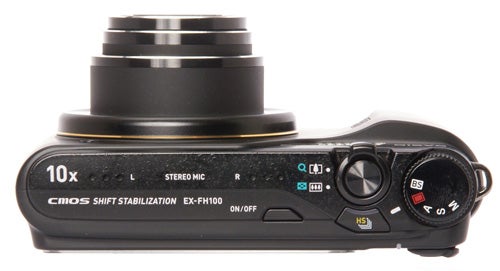
Casio’s autofocus systems have always been very good, and the FH100 is no exception. It has a nine-point contrast detection AF system, with the option for a moveable single-point and tracking AF as well. It is very fast and accurate, and its low-light performance is also very good. It has a good bright AF assist lamp with a ranger of about three metres.
Although the FH100 will be sold mainly on the strength of its high-speed shooting abilities, it can also compete with the best in its class in terms of image quality. Although it has what appears to be the same lens as the H15 it seems to suit the FH100 better, producing excellent edge-to-edge sharpness and minimal wide-angle distortion. There is some chromatic aberration towards the corners of the frame, but I’ve seen a lot worse. The level of recorded detail is superb, among the best in its class especially in Raw mode.
The camera is at its best in unusual lighting conditions, where sensor produces excellent dynamic range in high-contrast situations, while the built-in HDR produces even better results even in strong backlighting. Colour rendition is excellent.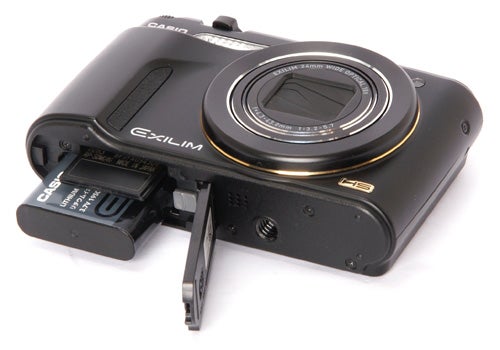
Casio cameras have never been the best at high-ISO noise control, but the FH100 does well in this area too, producing good results at 400 ISO and printable images at 800, although 1600 and thye maximum 3200 ISO are less good, ass is usually the case. All in all it’s a very creditable performance, and places the Casio FH100 firmly into the top bracket of long-zoom compacts.
”’Verdict”’
The Casio EX-FH100 demonstrates that Casio should not be overlooked when it comes to advanced high-tech cameras. It offers superior build quality, excellent handling and astonishing high-speed performance, as well as a versatile range of features and above-average image quality. If you’re looking for an advanced compact it should certainly be on your shortlist.
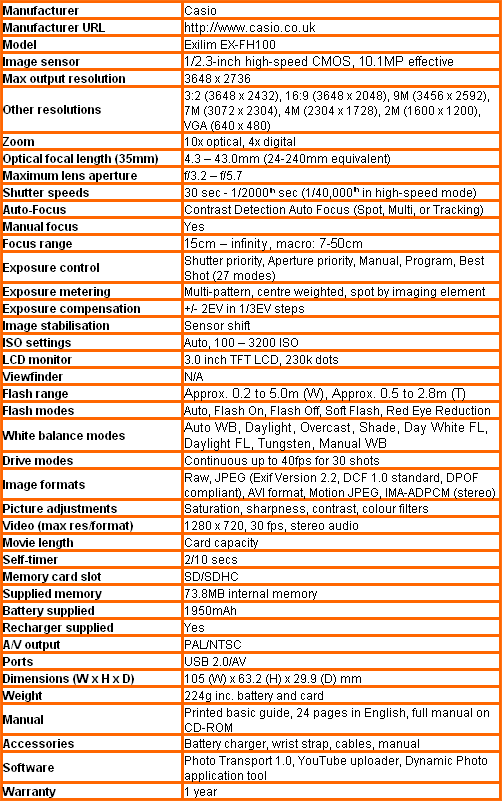
”Over the next few pages we show a range of test shots. On this page the full size image at the minimum and maximum ISO settings have been reduced to let you see the full image, and a series of full resolution crops have taken from original images at a range of ISO settings to show the overall image quality. These pictures were taken indoors using reflected natural light. ”
—-
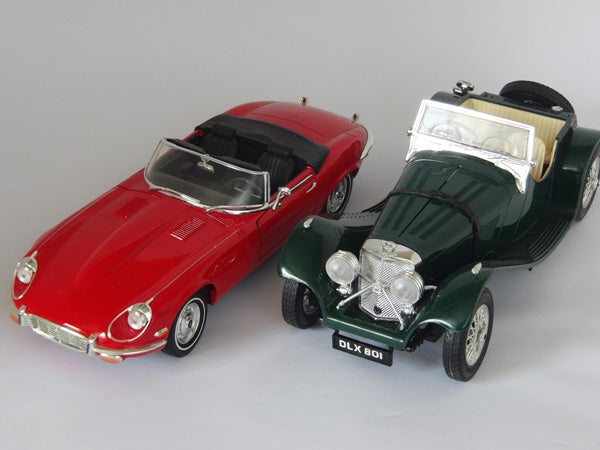
This is the full frame at 100 ISO.
—-
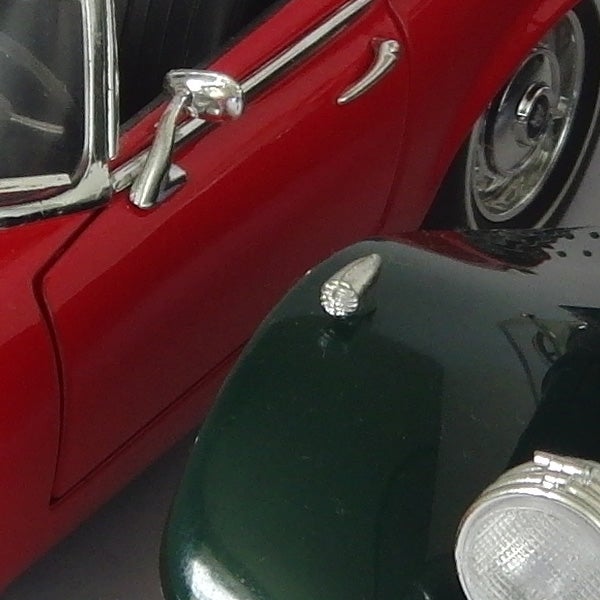
Image quality at minimum ISO is outstanding, with smooth colour and sharp detail.
—-
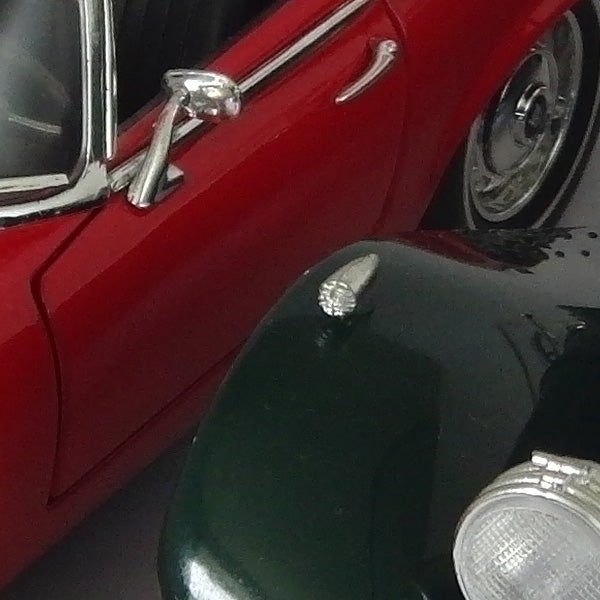
Still very good at 200 ISO.
—-
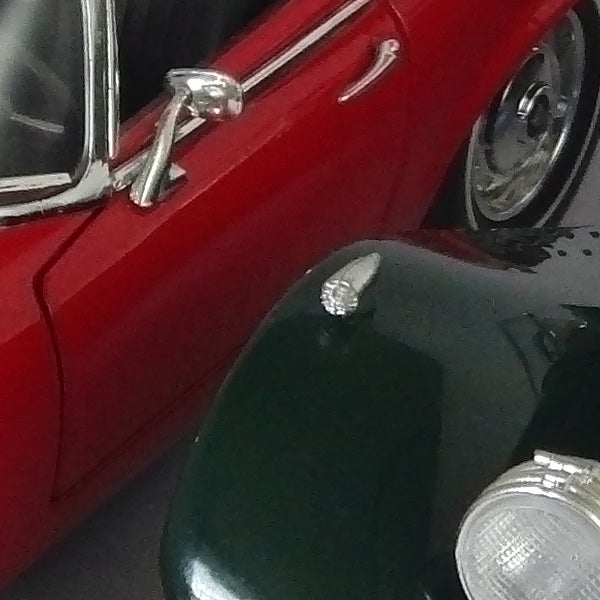
There is some sign of noise reduction at 400 mISO, but the colour and detail are still good.
—-
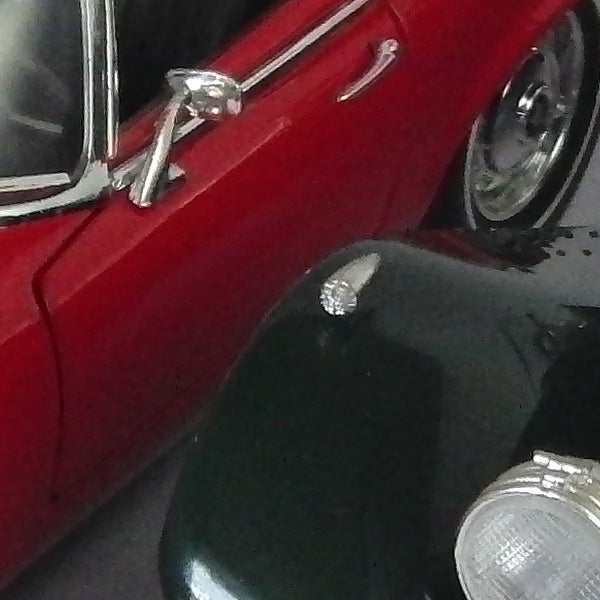
There is some loss of detsail at 800 ISO, but overall quality remains high.
—-
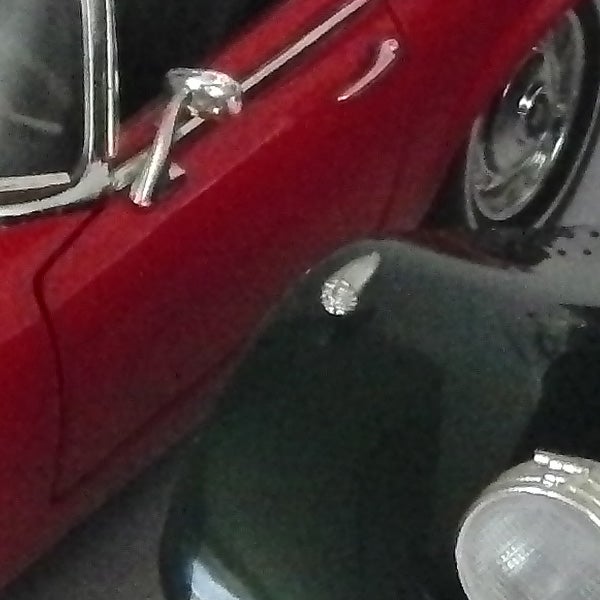
Image quality is much reduced at 1600 ISO.
—-
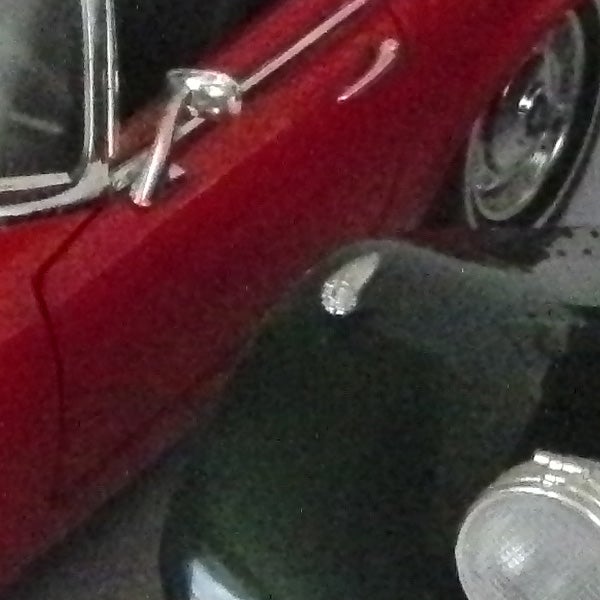
Most fine detail is lost at 3200 ISO.
—-
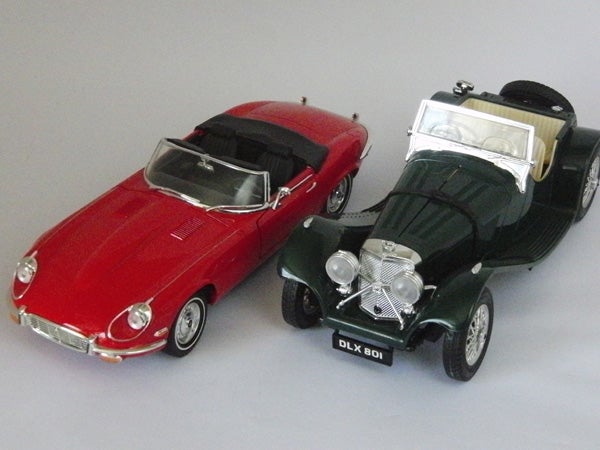
This is the full frame at 3200 ISO.
—-
”A range of general test shots are shown over the next two pages. In some cases, the full size image has been reduced for bandwidth purposes, and a crop taken from the original full resolution image has been placed below it to show the overall image quality. Some other pictures may be clicked to view the original full-size image. ”
—-
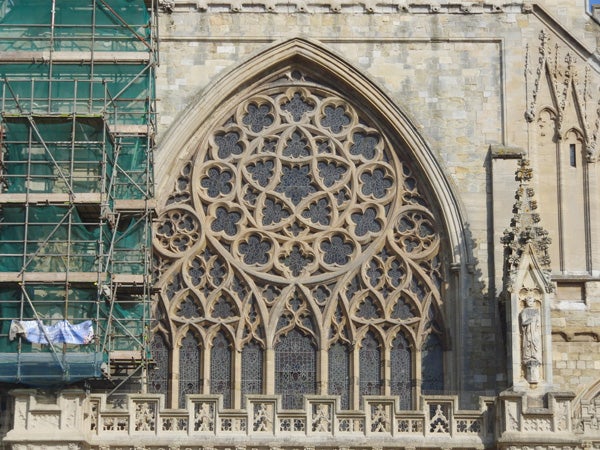
Here’s the usual detail test shot of the West Window of Exeter Cathedral, for you to compare with other cameras. See below for a full res crop, or click to see the whole picture.
—-
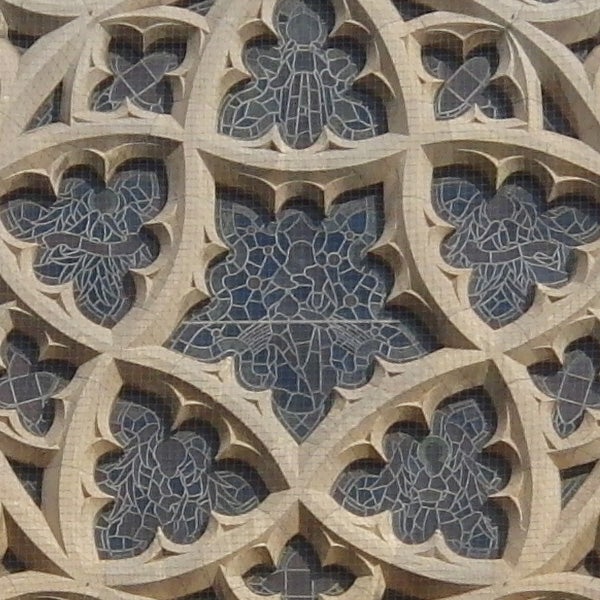
The level of recorded detail is very good, equal to the best in this class.
—-
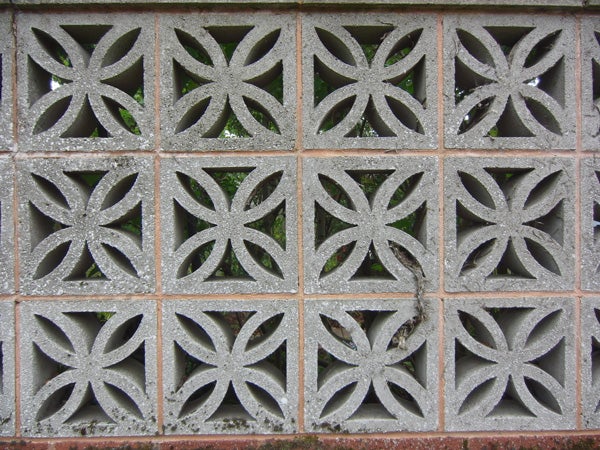
The lens produces very little wide angle barrel distortion.
—-
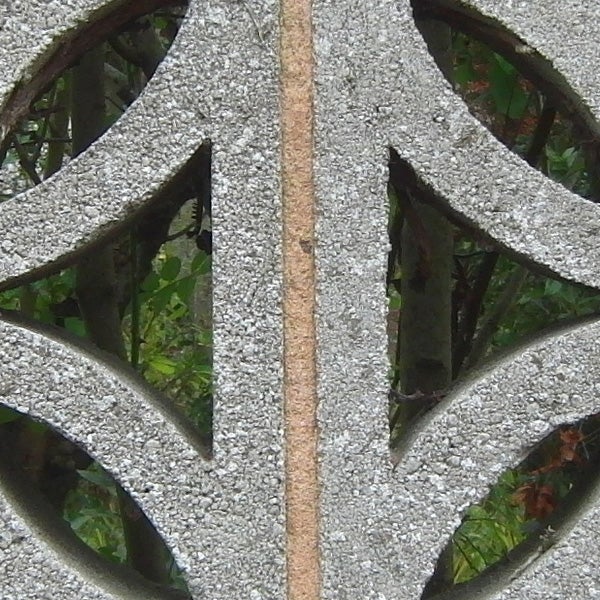
Centre sharpness is superb.
—-
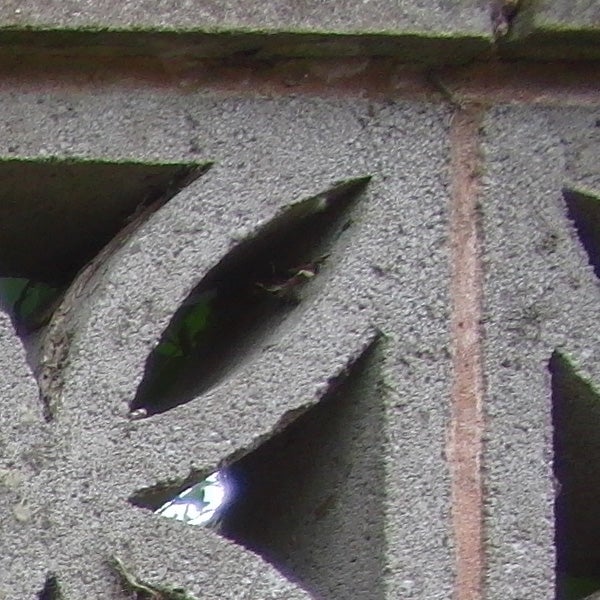
Corner sharpness is also very good, although there is some chromatic aberration.
—-
”Here are some general test shots to help evaluate the camera’s overall image quality, including dynamic range, colour rendition and the zoom range of the lens. Some pictures may be clicked to download the full size original image. ”
—-
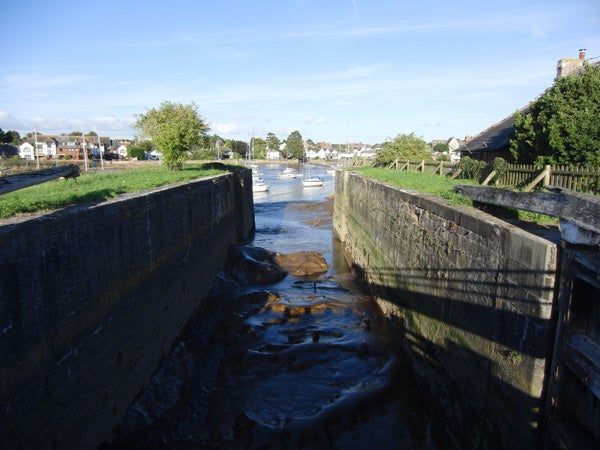
The wide angle end is equivalent to 24mm.
—-
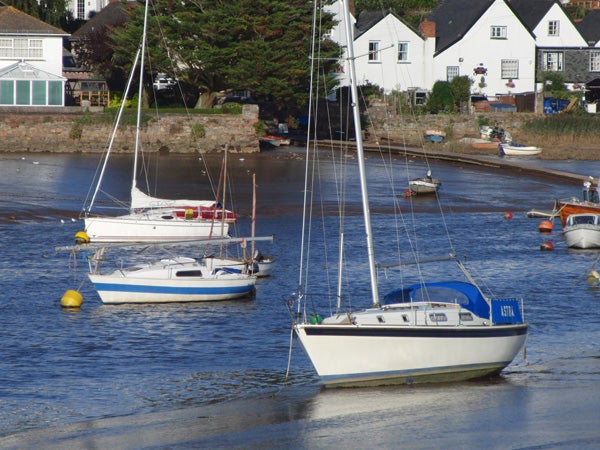
Taken from the same spot ass the shot above, the telephoto end is equivalent tom240mm.
—-
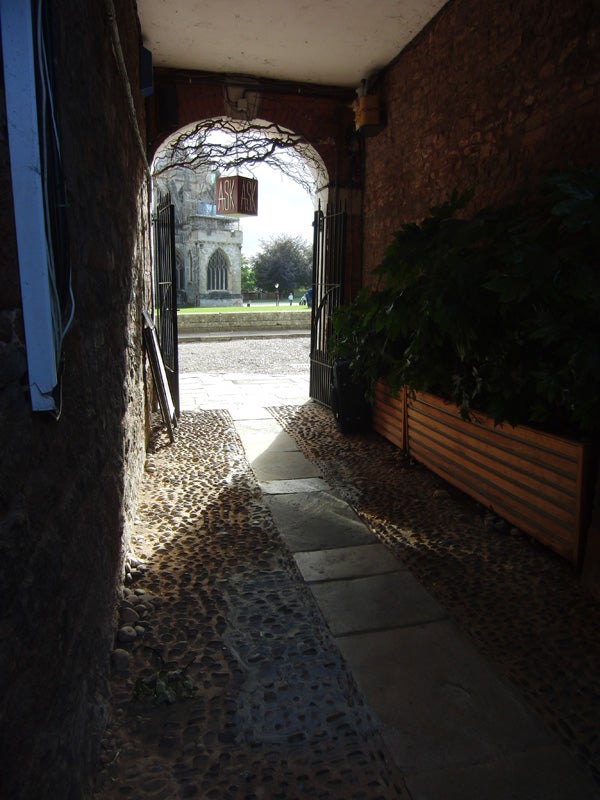
In standard program mode the dynamic range is better than average.
—-
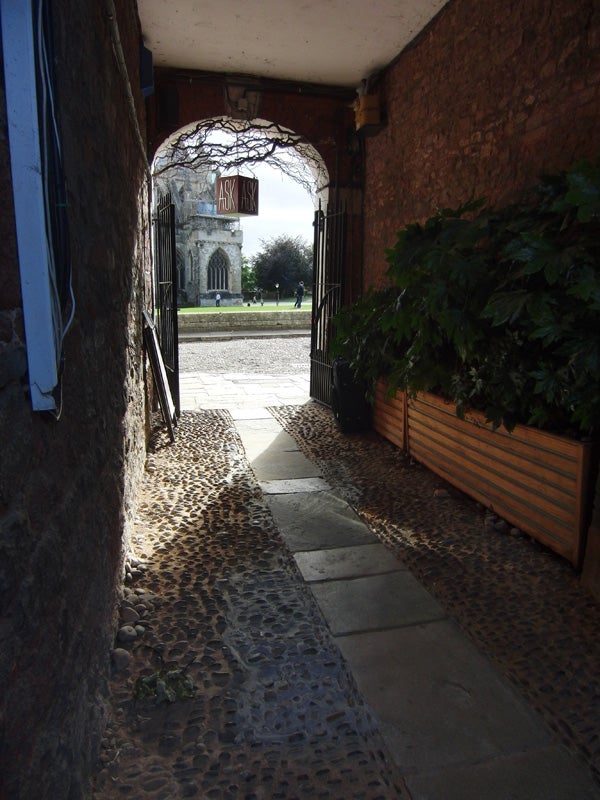
In the Lighting mode shadow detail is greatly enhanced.
—-
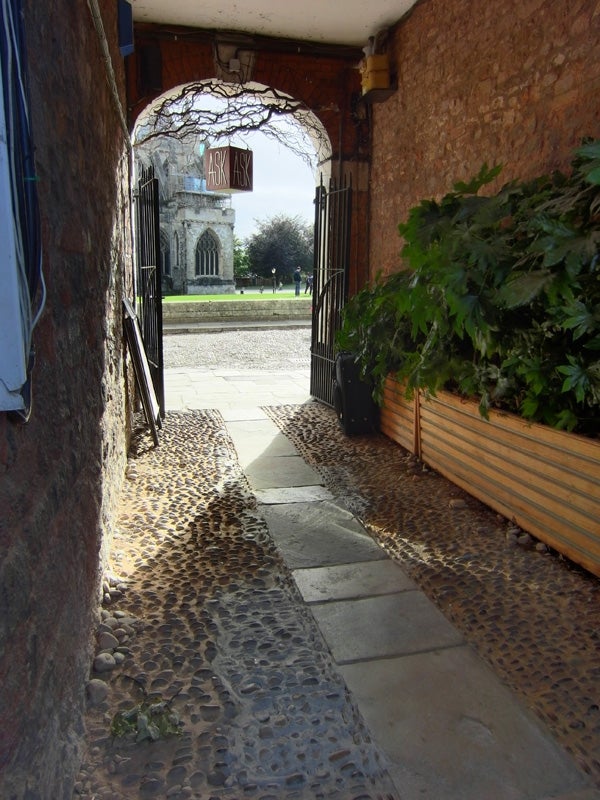
Using the in-camera HDR mode both shadow and highlight detail are massively improved.
—-

Colour rendition is bright and well saturated.
—-
Trusted Score
Score in detail
-
Value 9
-
Design & Features 10
-
Image Quality 9
-
Build Quality 9
Features
| Camera type | Digital Compact, Digital SLR |
| Megapixels (Megapixel) | 10.1 Megapixel |
| Optical Zoom (Times) | 10x |
| Image Sensor | 1/2.3-inch high-speed CMOS |
| Optical focal length | 4.3 to 43mm in 35mm film terms |
| Shutter speed | 30 secs to 1/2000 sec |
| Auto focus | Contrast Detection Auto Focus (Spot, Multi or Tracking) |
| Manual focus | Yes |
| Max output resolution | 3648x2736 |
| Other resolutions | 3648x2432, 3648x 2048, 3456x2592, 3072x2304, 2304x1728, 1600x1200, 640x480 |
| Focus range | 15cm to infinity, macro 7-50cm |
| Exposure control | Shutter priority, Aperture Priority, Manual, Best Shot |
| Exposure metering | Multi-pattern, centre-weighted, spot |
| Exposure compensation | +/- 2EV in 1/3 EV steps |
| Image Stabilisation | Sensor shift |
| ISO settings | Auto 100-3200 |
| LCD Monitor | 3-inch TFT LCD, 230k dots |
| Viewfinder | N/A |
| Flash range | 0.2 to 5m (wide), 0.5 to 2.8m (tele) |
| Flash modes | Auto, Flash On, Flash Off, Soft Flash, Red-eye reduction |
| White balance modes | Auto, WB, Daylight, Overcast, Shade, Day White FL, Daylight FL, Tungsten, Manual WB |
| Drive modes | Continuous up to 40fps for 30 shots |
| Image formats | RAW, JPEG |
| Picture adjustments | Saturation, sharpness, contrast, colour filters |
| Video (max res/format) | 1280x720 30fps |
| Movie length | Card capacity |
| Self timer | 2/10 secs |
| Memory card slot | SD/SDHC |
| Supplied memory | 73.8MB |
| Batteries supplied | 1950mAh |
| Charger supplied | Yes |
| A/V output | PAL/NTSC |
| Charging/Computer Connection | USB 2.0 |
| AV Out | Yes |
| Manual | Printed basic guide, 24-pages in English, full manual on CD |
Physical Specifications
| Dimensions Width (Millimeter) | 105mm |
| Depth (Millimeter) | 63.2mm |
| Weight (body only) (Kilogram) | 224g including battery and cardkg |

